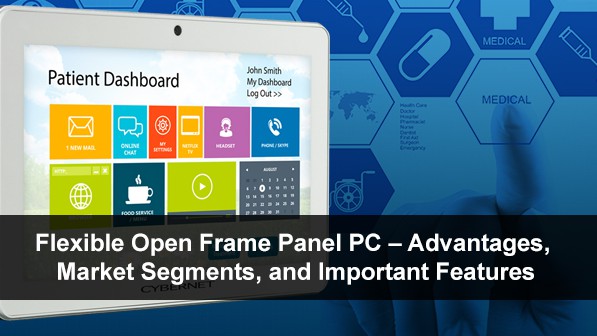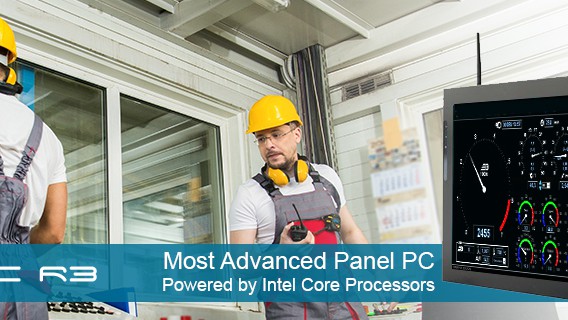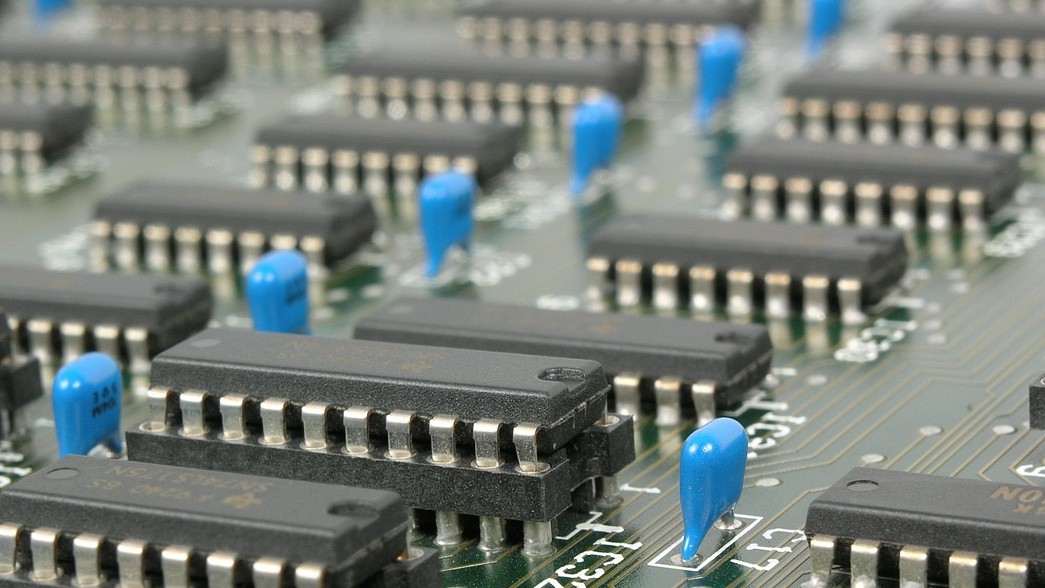An open frame panel PC incorporates a touchscreen display into the same enclosure as its internal components such as the processor, hard drive or solid state drive, motherboard, I/O ports and the power supply. Such design delivers high-end performance coupled with a compact footprint. This all-in-one (AIO) design makes open frame panel PC perfect for human-machine interface use in machine control and monitoring.
Open frame panel PC is designed for easy installation in an industrial environment – in machines, control cabinets, kiosks, etc. The resistive touch screen ensures seamless data accessibility and an overall ease of use. The open frame panel PC is built to withstand temperature fluctuations, extreme heat or cold, frequent in industrial environments. It is optimized for rugged environments and possesses such qualities as resistance against water and humidity, dust, grease, shock, and vibration.
High capacity industrial PCs, open frame panel PCs are designed to be integrated into an existing ecosystem in a production chain, and are widely used in original equipment manufacturer machinery (OEM), Human-Machine Interface (HMI), Machine-Machine Interface (MMI), Internet-of-Things, kiosk and self-service applications, factory automation, vision systems, material handling, multimedia and many other applications.
They are widely used in automotive, medical, aerospace, rail transit, food and beverage processing, automated test equipment, and many other industries.
The Advantages of Open Frame Panel PCs To Manufacturers & Factory Environments
Article Guide
The advantages of open frame panel PCs are generous for process automation, machine control, tracking and data acquisition, monitoring, processing visualization, and quality assurance.
Integration
The first and foremost advantage is the ease of integration into existing environments, and compatibility with new and legacy equipment, which enables it to bridge the different generations of equipment in use on the manufacturing floor.
The next key advantage is its ergonomic design – it is built to fit in environments where conventional PCs don’t, in small, constrained areas due to its slim, fanless and highly customizable design. Since there are no cables to connect the screen and the drive, it is ergonomic. Equipped with Bluetooth, Wi-Fi, Ethernet (LAN) and other connectivity options, HDMI, USB and serial ports, it is compatible with most equipment that can be found on a manufacturing floor.
Many open frame panel PCs also have the capability to install PCI or PCI Express cards, which simplifies their deployment and integration into the existing system.
Readability
More so, open frame panel PC features antiglare touch panel, which translates to optimized readability under the poorest of lighting conditions. Anti-scratch technology makes it apt for use in rugged environments, and for gloved input, as it is important for the workers to be able to input the data or commands without having to take off the gloves in the heat of the production process.
Power Consumption
Low power consumption is another reason many factories are deploying open frame panel PCs, as they incorporate CPUs that generate less heat. Paired with the fanless design and passive cooling, such computers consume less power. The fanless build and low power CPUs ensure better reliability and durability since there are less moving parts in them. Fans in conventional computers are among the components that tend to fail the most over time. Besides, they tend to suck in debris and dust inside the computer, which further contributes to the deterioration of the internal parts. The fanless build solves all these issues, increasing the lifespan and uptime without failures.
Durability
In fact, the failure rate of Cybernet’s open frame panel PCs is less than 2%, a number backed by years of record. Quiet, noiseless operation seems to come as a side effect of the fanless design, yet to some noise-sensitive environments, it is a crucial feature.
Durability is further backed by the ruggedness of the open frame panel PCs, as they come with the ingress protection IP65, and are sealed, protected from the ingress of liquids, dust, grime and other particles.
Mounting
Open frame panel PCs come with a wide variety of mounting options, including panel and VESA mount types. They can be mounted into an enclosure, onto a machine, or inside a control cabinet. The panel mount is the most frequent mounting style in factory automation, when the open frame panel PC is placed in a cutout in a metal panel or enclosure, and surrounded by a sealed bezel. The computer is attached to the enclosure with panel mount clips that hold it in place, providing a water-tight seal that protects the system from water and dust ingress. Most open frame panel PCs come with VESA mounting holes, which enable them to be attached to an articulating arm, mounted on a machine, or a desktop stand.
For applications that suggest exposure to shock or vibration, the fanless build is perfect, backed by the reliability of the solid state drive.
Human Machine Interface
Touchscreen user interface allows for applications to be controlled through user input that does not require an external keyboard or a mouse. Often, user applications are specifically designed for a certain screen size or resolution, so it is yet another advantage of open frame panel PCs that they come in a variety of sizes and aspect ratios. It enables them to support any resolution GUI (graphical user interface) and any application requirement imposed by a screen size.
Military Grade Components
Military grade components ensure the long MTBF of more than 50,000 hours of continuous use. They are designed for use in rugged environments, and operate at wide temperatures, under exposure to shock and vibration for 5+ years. Industrial grade motherboards and CPUs, in addition, come with a long-term availability. Designed with a long lifecycle, they minimize the obsolescence issue.
Customization
Customization is an important advantage of open frame panel PCs – from the processor and video card to HMI capabilities, connectivity, RS232 serial ports, dual NICs, OS and disk imaging, manufacturers can get the computers ready for work from day one, easy to deploy and mount.
Cost
Finally, open frame panel PCs enable low-cost deployment and maintenance in an ergonomic form factor that yields a powerful performance. As engineers develop M2M and IoT interfaces and scalable systems, it is necessary to minimize development costs. Scalable systems in open frame panel PCs are easy to upgrade when performance requirements increase. Windows-based open frame panel PCs running on Intel processors offer a cost-efficient solution that can be easily integrated into a new or existing system or scaled out when the need arises.
Summary
Benefits of open frame panel PCs:
- They enable machine-to-machine, human-to-machine, and Internet-of-Things applications.
- Easy installation.
- Easy integration, compatibility with legacy equipment.
- Long product lifecycle under rugged environmental conditions.
- The low failure rate of less than 2%.
- Low TCO due to low fail rate, uptime, military grade components, anti-scratch coating and rugged build.
- Dust, water, shock, vibration proof.
- Improved readability with the antiglare glass.
- Reads input from a gloved hand.
- Energy efficiency, low power consumption.
- Numerous mounting options.
- Full computing capabilities in an ergonomic design that can fit in virtually any space.
- Disk imaging, technical support for hardware, drivers, troubleshooting.
- Highly customizable, multiple processor options, serial ports, and I/O connectors.
Flexible Open Frame Panel PC – Advantages, Market Segments, and Important Features
November 1, 2016
Flexible open frame panel PCs are built from ground up to be easily integrated into custom solutions. The open frame means a device is mainly placed in a metal enclosure and does not have a bezel. Instead, it is…
0 Comments7 Minutes
Why Panel PCs Play an Important Role in an Industrial Environment
July 16, 2015
Professionals from different industries have come to rely on electronic devices like computers to carry out a variety of tasks. Some industries require the use of specialized devices to meet the demands of a rigorous…
0 Comments4 Minutes
Types of Industrial PCs Used in Industrial Automation
February 10, 2017
The industrial sector is increasingly experiencing the impact of the Industry 4.0 concept. Whether you are looking to optimize the workflow, increase production or savings in maintenance, or explore new automation…
0 Comments8 Minutes
You Can't
Learn from a Pop-up
But we can deliver knowledge to your inbox!
We dive deep in the industry looking for new trends, technology, news, and updates. We're happy to share them with you.
Knowledge, News, and Industry Updates Right in Your Inbox





